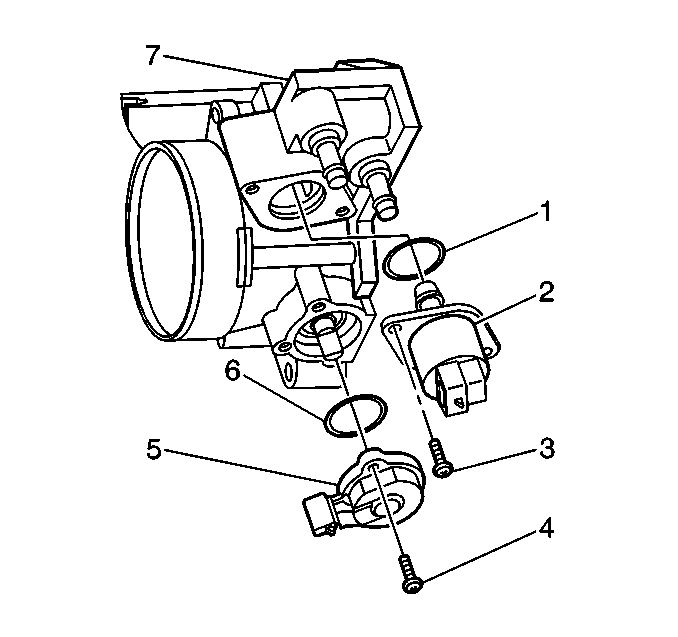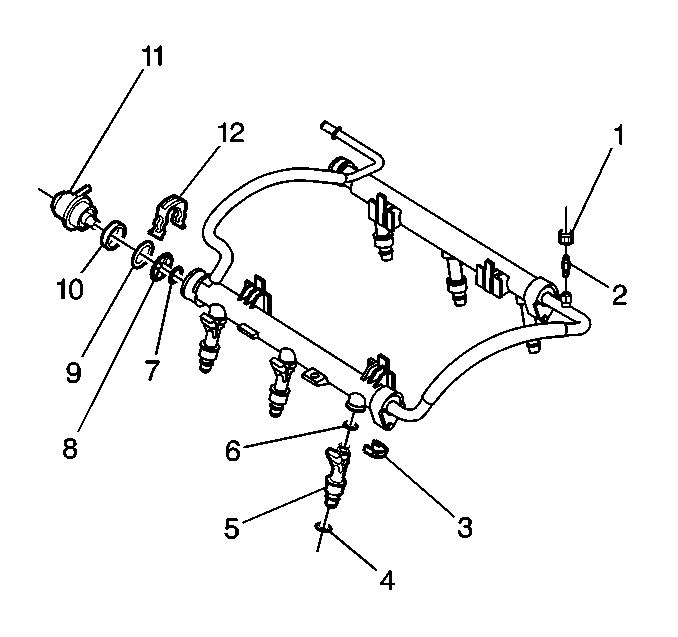The fuel metering system starts with the fuel in the fuel tank. An electric
fuel pump, located in the fuel tank sending assembly, pumps fuel to the fuel
rail through an in-pipe fuel filter. The fuel pump is designed
to provide fuel at a pressure above the pressure needed by the fuel injectors.
A fuel pressure regulator in the fuel rail keeps fuel available
to the fuel injectors at a constant pressure. Unused fuel is returned
to the fuel tank by a separate pipe. For further information on
the fuel tank, in-pipe filter, and fuel pipes, Refer to
Fuel Supply Component Description
The accelerator control system is cable-type.
There are no linkage adjustments. Therefore, the specific accelerator control
cable (1) and cruse control cable (3) must be used. Proper cable position
is maintained by use of a cable retainer (2).
The throttle body (1)
has a throttle plate to control the amount of air delivered to the engine.
The throttle position (TP) sensor (5), and the idle air control (IAC) valve
(2) are mounted on the throttle body.
Vacuum ports located behind the throttle plate provide the vacuum signals
needed by various components. The engine coolant is directed through a coolant
cavity in the throttle body to warm the throttle valve and prevent icing.



